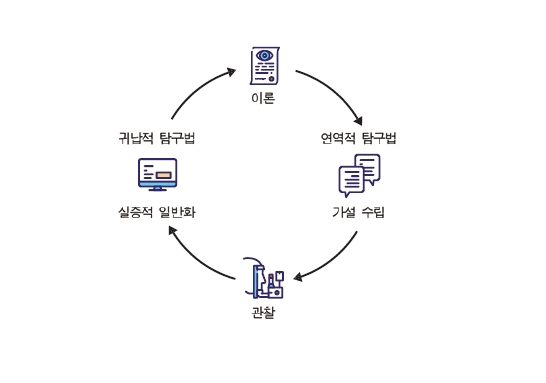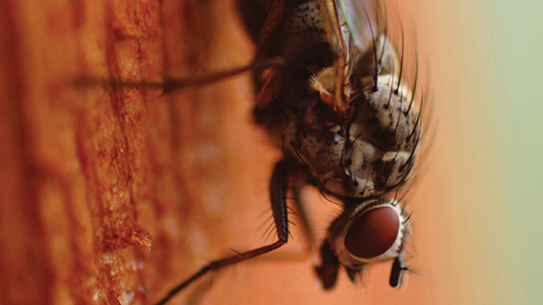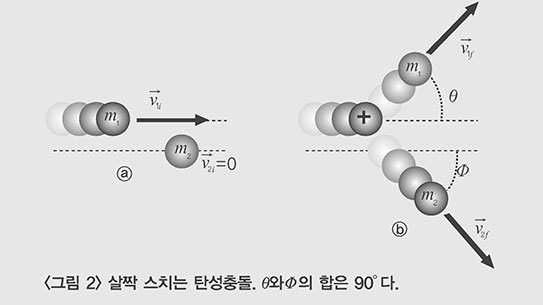●Check Point
과학자들이 가을을 맞이하는 북반구 지역의 사람들에게 신종 인플루엔자 바이러스 감염을 조심하라고 경고하고 있다. 이번호에서는 인플루엔자 바이러스가 왜 계절을 타는지 알아보고자 한다.
Health officials in the world are bracing for a resurgence of the new H1N1 virus this fall. Fall is the time when the influenza is being empowered with the resurgence of cold weather. By October, the U.S. government hopes to have 120 million doses of vaccine ready to fight the new virus. Already, H1N1 is hitting the southern hemisphere hard. Argentina has recorded more than 400 deaths from H1N1, second most after the U.S. That’s because it’s winter in the southern hemisphere now, and flu infections tend to spike during the fall and winter months in temperate countries.
So why do infections tend to go up in the cold winter season and level off in the summer? According to a study at Mount Sinai Medical School, the flu virus is more stable and able to stay airborne longer when the air is cold and dry. The Mount Sinai researchers, who tested guinea pigs, found that the spread of the virus was most prevalent when the temperature reached a chilly 5°C. And infections slowly decline as the mercury rises, before stopping altogether at 30°C.
Therefore tropical countries, where constantly high temperatures are continued, tend to have relatively even rates of flu infection all year long, without the sharp peaks and valleys of infection rate graphs seen in cooler countries.
But cold temperatures aren’t the only reason for the fluctuations of the flu infection rates. Most of us spend less time in the sun during the winter, and that means we can end up vitamin D deficient. It would leave us more vulnerable to any number of infections. And spending more time indoors is like putting us in the line of infection for the flu. It is so particularly if we share enclosed spaces with others. School is in session (not yet in the winter vacation) during the fall in the northern hemisphere, and classrooms can be excellent vectors of infection for all illnesses, including the flu.
Although so far the H1N1 virus doesn’t appear to have a significantly higher fatality rate than the usual seasonal flu. But so far no human being has immunity to this new strain of flu virus. It means that we’re likely to see very high infection rates of flu this year. H1N1 virus is still spreading in the northern hemisphere, even during the summer. It is especially dangerous in summer camps and military installations, where young people are spending a lot of time in close contact. This fact alone shows just how transmissible this new virus is. But as with previous viruses in previous years, the real test for H1N1-and for public-health officials who are planning their response to it will come in the coming fall and winter.
Scientific explanation
An influenza virus has only eight genes. This is far smaller number than the estimated 25,000 that human beings possess. But its simplicity hasn’t stopped it from wreaking havoc on humanity for centuries. Even today, with vaccines and antivirals, normal seasonal influenza kills some 36,000 Americans each year.
We’re living through a pandemic right now. In just a few months, H1N1 has spread to nearly every country in the world, infecting so many people that the World Health Organization has officially stopped counting. In nations where it is already winter, like Argentina, H1N1 has caused billions of dollars in damage. In the U.S., the virus has continued to multiply in the summer. This is a worrisome sign since influenza usually takes a vacation when the weather improves, but not the H1N1.
Still, so far H1N1 hasn’t proved a serious killer. But even a mild pandemic could easily overload a clogged healthcare system. And there’s no guarantee the virus won’t get worse. The Spanish flu was relatively light in the spring of 1918, only to turn lethal that autumn. U.S. health officials said on July 29 that they hope to have 120 million doses of a new H1N1 vaccine ready by October. But the virus could mutate by then, or the vaccine might prove less than effective.
Virologists often say that the only thing predictable about influenza is its unpredictability. As the world waits for the next onslaught, that bears remembering.
해석전 세계 보건당국자들이 이번 가을에 있을 신종 인플루엔자(H1N1) 바이러스 확산에 대비하고 있다. 추운 날씨가 시작되는 가을은 인플루엔자가 강력해지는 시기이다. 10월까지 미국 정부는 1억 2000만 명의 백신을 준비해 이 새로운 바이러스와 싸울 계획이다. 벌써 H1N1 바이러스는 지구의 남반구를 강타하고 있다. 아르헨티나는 H1N1 바이러스로 400명 이상의 사망자를 기록했는데, 이는 미국 다음으로 많은 수치다. 그 이유는 남반구에서는 지금이 겨울이기 때문이다. 온대지역의 나라들에서는 독감 감염이 가을과 겨울에 피크를 이룬다.
독감 바이러스 감염은 왜 겨울 시즌에 심해지다가 여름에 감소할까? 마운트시나이 의대의 연구에 따르면 독감 바이러스는 차갑고 건조한 공기에서 더 안정적으로 오랫동안 떠다닌다. 이 연구자들은 기니아피그(실험용 쥐)를 가지고 실험했는데 온도가 5도일 때 바이러스가 가장 잘 확산하더니 수은주가 올라갈수록 감염확률은 점차 감소했으며 30도에서는 감염이 멈췄다. 따라서 높은 기온이 지속되는 열대지역의 국가에서는 독감 감염률이 일 년 내내 일정 수준을 유지하며, 추운 국가에서 관찰되는 감염률 그래프의 가파른 오르내림이 보이지 않는다.
그러나 낮은 기온이 독감 감염율의 변동에 대한 유일한 이유는 아니다. 겨울에는 햇빛을 쬐는 시간이 적어 이는 우리 신체에 비타민D 부족이 오기 쉽다. 비타민D가 부족해지면 각종 질병에 걸리기 쉽다. 그리고 실내에서 더 많은 시간을 보낸다는 것은 독감 감염자의 줄에 서있음을 의미한다. 다른 사람들과 좁은 공간을 같이 사용할 때 더욱 그러하다. 가을이면 북반구에 있는 학교들이 개학을 하기 때문에(겨울방학 이전이므로) 학교 교실은 독감을 포함한 모든 감염에 좋은 매개체가 될 수 있다.
아직까지 H1N1 바이러스가 일반적인 계절적 독감에 비해 치사율이 높다고 볼 수는 없다. 하지만 이 새로운 감기 바이러스의 변종에 대해서 아직 어떤 인간도 면역력을 가지고 있지 못하다. 이는 올해 우리가 매우 높은 독감 감염률을 보게 되리라는 것을 의미한다. H1N1 바이러스는 여름임에도 불구하고 북반구에서 여전히 확산되고 있는 중이다. 특히 여름캠프나 군대 같은 곳은 젊은이들끼리 밀접하게 접촉이 많이 이뤄지는 곳이라 위험하다. 과거 바이러스들과 마찬가지로 H1N1과 그에 대항하는 법을 계획 중인 공중보건 관계자들에게 진정한 시험대는 다가올 가을과 겨울이 될 것이다.
과학적인 설명
인플루엔자 바이러스는 단 8개의 유전자만으로 이뤄져 있다. 이것은 인간이 소유하고 있을 것으로 추정되는 2만 5000개보다 훨씬 적은 수치이다. 그러나 그 단순함이 수 세기동안 인류에게 내린 재앙은 엄청나다. 백신과 항바이러스약이 존재하는 오늘날에도 일반적인 계절 인플루엔자로 매년 미국에서 사망하는 사람이 3만 6000명에 이른다.
우리는 지금 신종 플루 바이러스의 팬데믹을 통과하고 있는 중이다. 몇 달 만에 H1N1 바이러스는 전 세계의 거의 모든 국가로 확산됐다. 세계보건기구(WHO)는 공식적으로 감염자 수를 집계하는 것을 중단했을 정도다. 아르헨티나처럼 이미 겨울에 들어선 국가에서는 벌써 H1N1이 수십억 달러의 피해를 입었다. 미국에서는 여름임에도 바이러스가 계속 증가했다. 이는 우려되는 징후인데, 보통 날씨가 좋아지면 인플루엔자도 휴지기(休止期)를 갖지만 H1N1은 그렇지 않았기 때문이다.
아직까지 H1N1이 심각한 사망원인이라고는 증명되지는 않았다. 그러나 아주 약한 팬데믹이라 하더라도 정체된 보건 시스템에는 과부하를 줄 것이다. 바이러스가 더 나빠지지 않으리라는 보장도 없다. 1918년 봄에 있었던 스페인 독감은 상대적으로 가벼웠지만 가을이 되면서 치명적으로 변했다.
미국의 보건당국은 10월까지 1억 2000만 명 분량의 H1N1 백신을 준비할 것이라고 7월 29일 발표했다. 하지만 그때에는 이미 바이러스가 변이될 수도 있고 혹은 백신이 생각보다 낮은 효과를 보일 수도 있다. 바이러스학자들은 인플루엔자에 대해 예측할 수 있는 유일한 것은 그것의 예측불가능성이라고 말한다.
과학자들이 가을을 맞이하는 북반구 지역의 사람들에게 신종 인플루엔자 바이러스 감염을 조심하라고 경고하고 있다. 이번호에서는 인플루엔자 바이러스가 왜 계절을 타는지 알아보고자 한다.
Health officials in the world are bracing for a resurgence of the new H1N1 virus this fall. Fall is the time when the influenza is being empowered with the resurgence of cold weather. By October, the U.S. government hopes to have 120 million doses of vaccine ready to fight the new virus. Already, H1N1 is hitting the southern hemisphere hard. Argentina has recorded more than 400 deaths from H1N1, second most after the U.S. That’s because it’s winter in the southern hemisphere now, and flu infections tend to spike during the fall and winter months in temperate countries.
So why do infections tend to go up in the cold winter season and level off in the summer? According to a study at Mount Sinai Medical School, the flu virus is more stable and able to stay airborne longer when the air is cold and dry. The Mount Sinai researchers, who tested guinea pigs, found that the spread of the virus was most prevalent when the temperature reached a chilly 5°C. And infections slowly decline as the mercury rises, before stopping altogether at 30°C.
Therefore tropical countries, where constantly high temperatures are continued, tend to have relatively even rates of flu infection all year long, without the sharp peaks and valleys of infection rate graphs seen in cooler countries.
But cold temperatures aren’t the only reason for the fluctuations of the flu infection rates. Most of us spend less time in the sun during the winter, and that means we can end up vitamin D deficient. It would leave us more vulnerable to any number of infections. And spending more time indoors is like putting us in the line of infection for the flu. It is so particularly if we share enclosed spaces with others. School is in session (not yet in the winter vacation) during the fall in the northern hemisphere, and classrooms can be excellent vectors of infection for all illnesses, including the flu.
Although so far the H1N1 virus doesn’t appear to have a significantly higher fatality rate than the usual seasonal flu. But so far no human being has immunity to this new strain of flu virus. It means that we’re likely to see very high infection rates of flu this year. H1N1 virus is still spreading in the northern hemisphere, even during the summer. It is especially dangerous in summer camps and military installations, where young people are spending a lot of time in close contact. This fact alone shows just how transmissible this new virus is. But as with previous viruses in previous years, the real test for H1N1-and for public-health officials who are planning their response to it will come in the coming fall and winter.
Scientific explanation
An influenza virus has only eight genes. This is far smaller number than the estimated 25,000 that human beings possess. But its simplicity hasn’t stopped it from wreaking havoc on humanity for centuries. Even today, with vaccines and antivirals, normal seasonal influenza kills some 36,000 Americans each year.
We’re living through a pandemic right now. In just a few months, H1N1 has spread to nearly every country in the world, infecting so many people that the World Health Organization has officially stopped counting. In nations where it is already winter, like Argentina, H1N1 has caused billions of dollars in damage. In the U.S., the virus has continued to multiply in the summer. This is a worrisome sign since influenza usually takes a vacation when the weather improves, but not the H1N1.
Still, so far H1N1 hasn’t proved a serious killer. But even a mild pandemic could easily overload a clogged healthcare system. And there’s no guarantee the virus won’t get worse. The Spanish flu was relatively light in the spring of 1918, only to turn lethal that autumn. U.S. health officials said on July 29 that they hope to have 120 million doses of a new H1N1 vaccine ready by October. But the virus could mutate by then, or the vaccine might prove less than effective.
Virologists often say that the only thing predictable about influenza is its unpredictability. As the world waits for the next onslaught, that bears remembering.
해석전 세계 보건당국자들이 이번 가을에 있을 신종 인플루엔자(H1N1) 바이러스 확산에 대비하고 있다. 추운 날씨가 시작되는 가을은 인플루엔자가 강력해지는 시기이다. 10월까지 미국 정부는 1억 2000만 명의 백신을 준비해 이 새로운 바이러스와 싸울 계획이다. 벌써 H1N1 바이러스는 지구의 남반구를 강타하고 있다. 아르헨티나는 H1N1 바이러스로 400명 이상의 사망자를 기록했는데, 이는 미국 다음으로 많은 수치다. 그 이유는 남반구에서는 지금이 겨울이기 때문이다. 온대지역의 나라들에서는 독감 감염이 가을과 겨울에 피크를 이룬다.
독감 바이러스 감염은 왜 겨울 시즌에 심해지다가 여름에 감소할까? 마운트시나이 의대의 연구에 따르면 독감 바이러스는 차갑고 건조한 공기에서 더 안정적으로 오랫동안 떠다닌다. 이 연구자들은 기니아피그(실험용 쥐)를 가지고 실험했는데 온도가 5도일 때 바이러스가 가장 잘 확산하더니 수은주가 올라갈수록 감염확률은 점차 감소했으며 30도에서는 감염이 멈췄다. 따라서 높은 기온이 지속되는 열대지역의 국가에서는 독감 감염률이 일 년 내내 일정 수준을 유지하며, 추운 국가에서 관찰되는 감염률 그래프의 가파른 오르내림이 보이지 않는다.
그러나 낮은 기온이 독감 감염율의 변동에 대한 유일한 이유는 아니다. 겨울에는 햇빛을 쬐는 시간이 적어 이는 우리 신체에 비타민D 부족이 오기 쉽다. 비타민D가 부족해지면 각종 질병에 걸리기 쉽다. 그리고 실내에서 더 많은 시간을 보낸다는 것은 독감 감염자의 줄에 서있음을 의미한다. 다른 사람들과 좁은 공간을 같이 사용할 때 더욱 그러하다. 가을이면 북반구에 있는 학교들이 개학을 하기 때문에(겨울방학 이전이므로) 학교 교실은 독감을 포함한 모든 감염에 좋은 매개체가 될 수 있다.
아직까지 H1N1 바이러스가 일반적인 계절적 독감에 비해 치사율이 높다고 볼 수는 없다. 하지만 이 새로운 감기 바이러스의 변종에 대해서 아직 어떤 인간도 면역력을 가지고 있지 못하다. 이는 올해 우리가 매우 높은 독감 감염률을 보게 되리라는 것을 의미한다. H1N1 바이러스는 여름임에도 불구하고 북반구에서 여전히 확산되고 있는 중이다. 특히 여름캠프나 군대 같은 곳은 젊은이들끼리 밀접하게 접촉이 많이 이뤄지는 곳이라 위험하다. 과거 바이러스들과 마찬가지로 H1N1과 그에 대항하는 법을 계획 중인 공중보건 관계자들에게 진정한 시험대는 다가올 가을과 겨울이 될 것이다.
과학적인 설명
인플루엔자 바이러스는 단 8개의 유전자만으로 이뤄져 있다. 이것은 인간이 소유하고 있을 것으로 추정되는 2만 5000개보다 훨씬 적은 수치이다. 그러나 그 단순함이 수 세기동안 인류에게 내린 재앙은 엄청나다. 백신과 항바이러스약이 존재하는 오늘날에도 일반적인 계절 인플루엔자로 매년 미국에서 사망하는 사람이 3만 6000명에 이른다.
우리는 지금 신종 플루 바이러스의 팬데믹을 통과하고 있는 중이다. 몇 달 만에 H1N1 바이러스는 전 세계의 거의 모든 국가로 확산됐다. 세계보건기구(WHO)는 공식적으로 감염자 수를 집계하는 것을 중단했을 정도다. 아르헨티나처럼 이미 겨울에 들어선 국가에서는 벌써 H1N1이 수십억 달러의 피해를 입었다. 미국에서는 여름임에도 바이러스가 계속 증가했다. 이는 우려되는 징후인데, 보통 날씨가 좋아지면 인플루엔자도 휴지기(休止期)를 갖지만 H1N1은 그렇지 않았기 때문이다.
아직까지 H1N1이 심각한 사망원인이라고는 증명되지는 않았다. 그러나 아주 약한 팬데믹이라 하더라도 정체된 보건 시스템에는 과부하를 줄 것이다. 바이러스가 더 나빠지지 않으리라는 보장도 없다. 1918년 봄에 있었던 스페인 독감은 상대적으로 가벼웠지만 가을이 되면서 치명적으로 변했다.
미국의 보건당국은 10월까지 1억 2000만 명 분량의 H1N1 백신을 준비할 것이라고 7월 29일 발표했다. 하지만 그때에는 이미 바이러스가 변이될 수도 있고 혹은 백신이 생각보다 낮은 효과를 보일 수도 있다. 바이러스학자들은 인플루엔자에 대해 예측할 수 있는 유일한 것은 그것의 예측불가능성이라고 말한다.

















